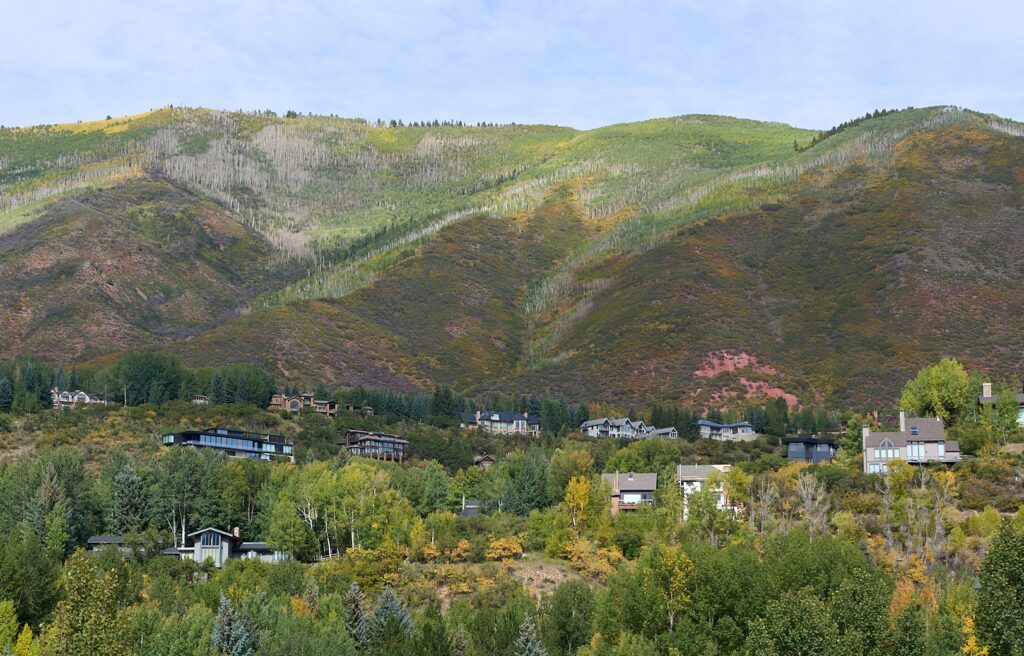What Color is the Black Bear?
ACES Staff
June 23, 2014

Summer is in full swing at Hallam Lake and I’m willing to bet most of us are excited for the warm days, green plants, and vivid wildflowers. Black bears, skinny from their lengthy winter slumber, are probably more excited than all of us. It is officially bear season in the Roaring Fork Valley and last week our motion-activated trail cameras snapped pictures of three different bears visiting the Hallam Lake preserve.
ACES’ “trail cams” are motion sensitive cameras that we position on the preserve in hopes of spotting wildlife in their natural setting. These cameras can help scientists, naturalists, and nature-enthusiasts better understand wildlife habits. Each picture is stamped with a date, time and temperature, and these clues help us piece together a story.
These three black bears, possibly a family, visited the same spot at Hallam Lake perhaps getting a drink of water from the lake. How do we know these are three different individuals? If you look closely you’ll notice distinct colorations of each bear. Before you read on, look at the pictures below and try to spot the clues we used!
The first bear has a much lighter shade of fur on its upper back, and a darker shade on its rear. The second bear has a very distinct mowhawk and is easily recognizable. The third bear has a very healthy coat of fur, and its darker rump is less prominent than the first bear.
Black bears got their name from the first European settlers that came to America, but it turns out these bears aren’t always black. In North America we can find black bears with brown, cinnamon, blonde or even white fur. The color of a bear’s fur depends heavily on the habitat that the bear lives in. East of the Great Plains, almost all black bears have dark black fur, allowing the bear to blend into the shadows of the dense trees and shrubs. In the western states, black bear coats tend to be a lighter shade of brown. This brown coat helps bears camouflage in the dryer landscapes. Additionally, these brown coats retain less heat than the black coats, allowing these bears to avoid the threat of heat stress. The first “cinnamon” phase bear described in Colorado was by J.J. Audubon in 1854. In 1991, it was estimated that around 83% of black bear in Colorado have a brown coloration. In Yosemite Park, it is currently estimated that 91% of black bears have a brown/blonde coat of fur.
You’ll notice from the time stamp that these three bears were photographed within 20-30 minutes of each other, early in the morning. We often see bears on the Hallam Lake preserve and always give them plenty of space, as one should with any wild animal. To explore Hallam Lake in the early morning sign up for our Morning Birding classes, offered on Tuesday’s throughout the summer.
~ Matt Thomas, ACES Naturalist
Related Content

RFV Phenology: Green is out, yellow is in! Or is it?
Learn More
ACES // City of Aspen Open Space Birding: Marolt Open Space 9/5/2024
Learn More